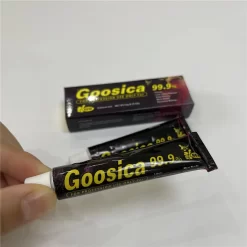This article delves into the effectiveness, correct application, duration, and potential reasons for the failure of local anesthesia. It also introduces Tattoo Numb Cream, a local anesthetic containing lidocaine and prilocaine.
Every year, an increasing number of people wish to undergo cosmetic procedures. However, there are still individuals who refuse them due to fear of pain. Therefore, the question remains relevant: how can the skin be locally anesthetized to endure the session more calmly? Cosmetologists have several methods of local anesthesia available to them – application and infiltration. The former is preferable as it has fewer side effects and does not involve trauma to the skin.
**Effect of Local Anesthetic:**
Pain is the body’s natural reaction to injury or other dangerous influences. Pain receptors, which are free nerve endings, are responsible for its sensation. At the moment when a person experiences pain, specific somatic, behavioral, and emotional manifestations may appear. These include increased heart rate, dilated pupils, increased muscle tone, increased sweating, etc. That is, the body mobilizes all systems to protect against damaging effects. Needless to say, such a shake-up is undesirable for an individual.
Topical anesthesia occurs when the local anesthetic comes into contact with tissue. It reversibly blocks the conduction of nerve impulses, due to which the person does not feel pain or feels less.
**How to Apply Anesthetic Correctly:**
An anesthetic is a drug whose status must be confirmed after the registration procedure. The use of anesthetics that do not have such a “status” is dangerous, since there is no proper control over their production. The composition and concentration of active ingredients in them may be unpredictable.
Each medicinal product is accompanied by instructions for use, which indicate how to use it correctly, in what dosage, how long to keep it on the skin, etc. Thus, Goosica Numbing cream has been registered as a medicine. It must be applied in a thick layer covering the skin pattern. You can cover the treated area with cling film on top to improve the absorption of the active ingredients. The cream should be applied approximately 60 minutes before painful exposure. After the specified time, its remnants are removed from the skin, and the procedure can begin.
**How Long Does the Anesthetic Last?**
This primarily depends on its composition. One of the indicators that influences the duration of exposure is the fat solubility of the anesthetic. Nerve cell membranes are 80% fat, so this factor also affects the power of the anesthetic. By the way, there is a misconception that the higher the concentration of active components in the composition, the stronger and longer lasting the effect. This is not true.
The concentration of the anesthetic determines how quickly the reaction occurs. It affects power only up to a certain level and then reaches a plateau. This is explained by the fact that the number of receptors for communication with the anesthetic is limited. For a mixture of prilocaine and lidocaine, the optimal concentration is 5%.
Goosica Numbing cream contains 12.5% lidocaine and 12.5% prilocaine. As a rule, its effect lasts up to 2 hours.
**Why Doesn’t the Anesthetic Work?**
There are several explanations for why the painkiller didn’t work. The most common reason is its incorrect use. It is imperative to adhere to the instructions for use and follow recommendations on the volume of application, duration of application, etc.
The method of pain relief may not be appropriate for the procedure being performed. For example, for SMAS-lifting, the effect of a surface anesthetic may be insufficient, and infiltration anesthesia is necessary.
When using a “cosmetic” anesthetic, that is, one that has not been registered as a medicinal product, it is impossible to know exactly the composition, and therefore it is impossible to predict how such an agent will act.
**Goosica Numbing cream– Local Anesthetic with Lidocaine and Prilocaine**
Goosica Numbing cream is a local anesthetic with two active ingredients – lidocaine and prilocaine. It has been proven that these active ingredients enhance each other’s effects. The formula of the cream is stable; it can be stored at room temperature up to 30°C. This is a plus, since after cooling, the effect of local anesthesia takes longer to manifest.
Check our bestsellers!
This article discusses the principles, correct application methods, duration, and reasons for failure of local anesthesia. Local anesthesia works by blocking nerve impulse transmission upon contact with tissue, thereby alleviating or eliminating pain. Proper usage guidelines include following instructions, appropriate dosage, and using cling film to enhance absorption. Duration depends on the composition and concentration, while reasons for failure may include improper usage and inappropriate anesthesia methods. Goosica Numbing cream, containing lidocaine and prilocaine, is introduced as a local anesthetic product proven to enhance each other’s effects, with a stable formula suitable for long-term storage.





















